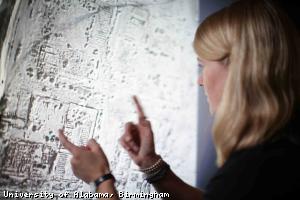
It is a simple but largely accurate rule of thumb that the further we go back in time, the hazier our historical knowledge of the periods get.
Today we each leave behind an abundant trail of our existence behind us, from detailed state records through to online accounts showing our musical tastes and embarrassing pictures. However, with each year, decade or century we go back we often have to rely on increasingly less precise, detailed or reliable records.
When you get past the time of written history, which for many cultures and civilisations only involves going back a millennium or so, you are left with an altogether different form of history: archaeology.
An example: let’s say you are trying to study the Vikings of Dark Age Scandinavia. This is a civilisation about which written sources are few and far between. Runic symbols on burial stones account for much of the text we have to work from – that and retrospective works such as Beowulf, but this is very much a fictional, secondary source. And so the vast majority of our knowledge on the ancient Norse people, their chronology, rulers, social practices, beliefs and culture comes from archaeology – water burials, remains of settlements and relics that they left behind during military conquests.
It is significant, therefore, that this vital discipline is constantly becoming more advanced in its methods and technology. In the same way carbon dating was a huge leap in our ability to understand the age of items that were unearthed, today improving archaeological technology is providing us with a richer, more accurate picture of a time before written historical records.
Satellite images, for example, can offer clues as to where hitherto undiscovered settlements could have been. Scanning technology meanwhile can cut out the need for the costly and time consuming process of speculative digging, instead offering a 3D projection of what lies underneath the Earth’s surface. What this leads us to is a progressive form of archaeology that can deliver new insights into periods and places that have remained an enigma for historians.
In might be a subject that is commonly associated with dusty books in old libraries, but when it comes to ancient history technology is the ace up the sleeve. Every technological advancement means that what were once ‘guestimates’ are now becoming scientifically verifiable facts, in turn enhancing our knowledge about people, cultures or entire historical periods for which we do not have primary written sources.
(Image: University of Alabama, Birmingham)
